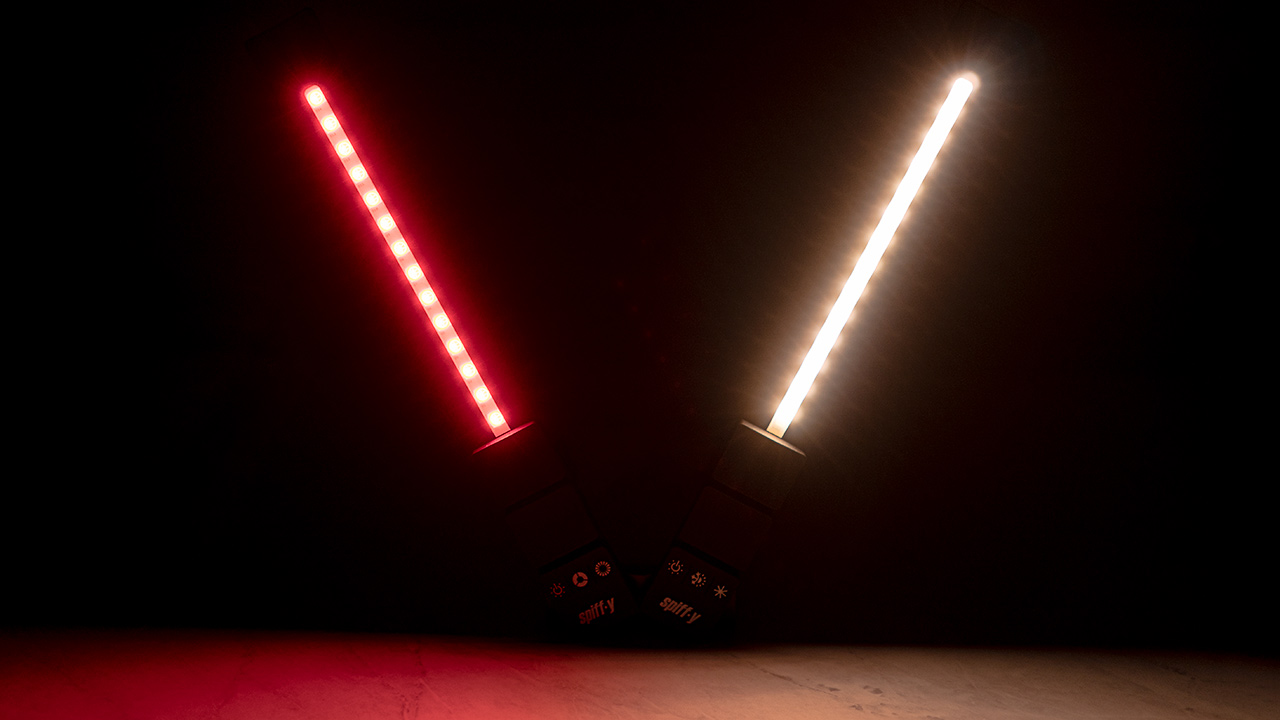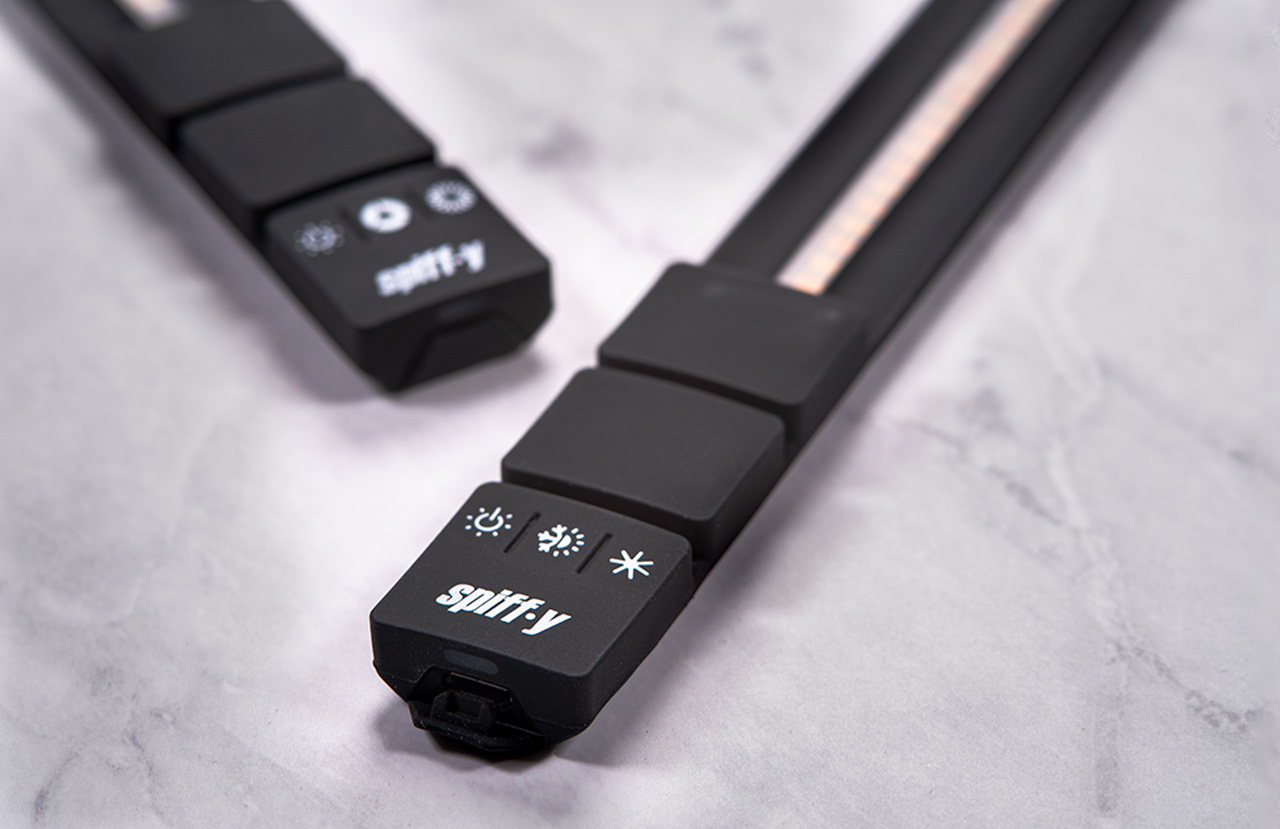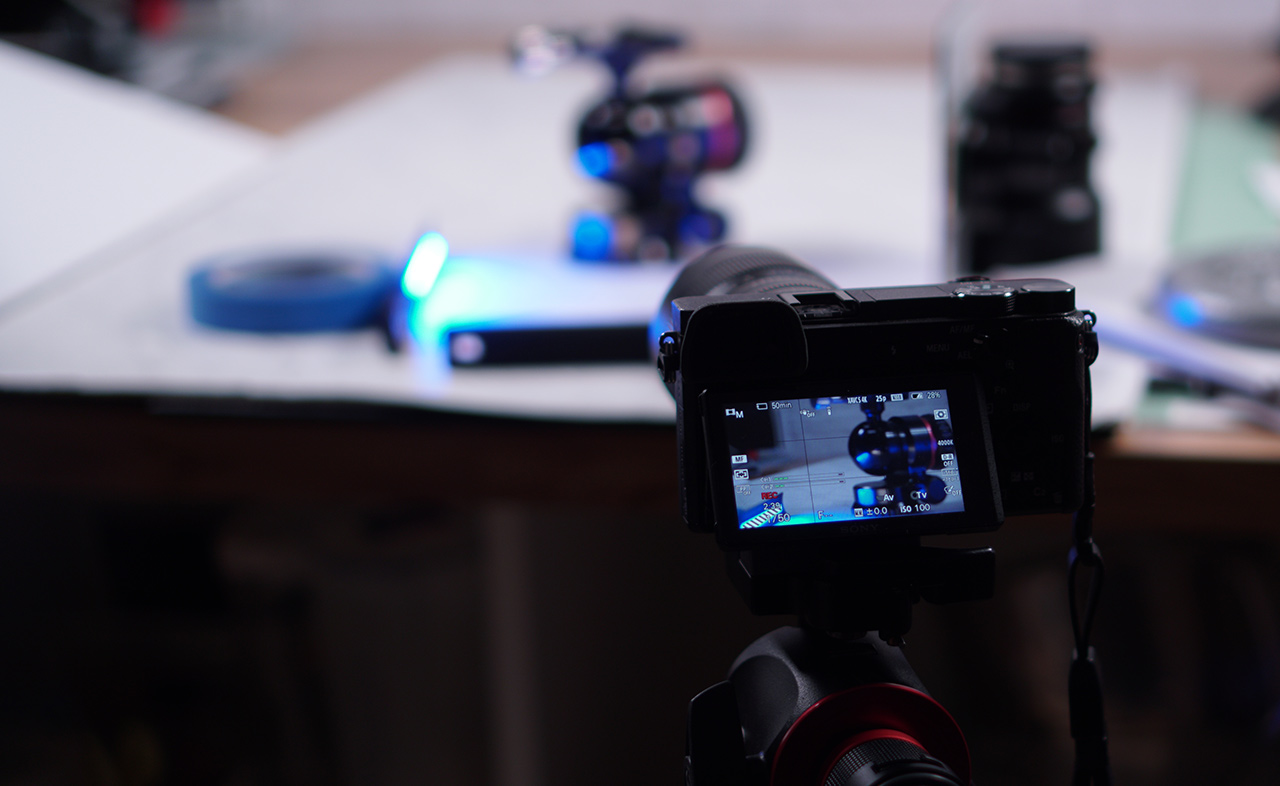Today we are taking a look at two products made by Spiffy Gear. This company has already developed a number of innovative products including the light blaster and the Specular modular lighting system.
The LUMEE is a really unique design for a photographic light both in terms of its form factor and the way it can be used. This light can turn into a Bracelet and you can certainly use it in this way, which can be useful for video clips for example, but for us at least this is not the most appealing part of this light.
Before we will tell you why we think the LUMEE lights are cool, let’s take a closer look at their design and what they can do.
Lumee – Bi-Color or RGB with high CRI
Each LUMEE light is just over 22cm (or 9″) long and 2.5cm wide (about 1″). They have a magnet on the back so you can connect them to almost anything metallic, they have a small hole on the top if you want to hang them and as noted, they can wrap around your arm or anything round with a similar size (it might even work with slightly larger objects although it won’t encompass them completely).
The body of the LUMEE is made from a type of rubberized material that is also splash-proof and has three buttons and a micro USB connector for charging which is protected by a rubberized seal. Each unit comes with a short USB cable for charging, as well as a few metallic circles with an adhesive that you can put on non-magnetic objects to hold the LUMEE in place.
There are two variants of LUMEEs at the moment – an RGB version (just RGB colors no “white” light of any type) and a Bi-Color version that has an official color range of 2700K to 6500K.
Performance
In terms of power output, we tested the Bi-Color LUMEE light using our faithful Sekonic C700 and got around 30lux at a distance of 1m, and about 250lux (both measured at around 2600K) from a distance of 30cm so this is a light that you would like to use fairly close to your subject. (we tried testing the RGB but each color has a very different lux reading ranging from under 60 to over 180lux from 30cm).
In terms of color temperature, we tested the Bi-color LUMEE and got a minimum reading of just under 2600K and a maximum reading of just over 5600K which is certainly very usable although on the cooler side it doesn’t quite reach the 6500K official specs.
Finally, we measured the CRI of the bi-colored LUMME at its minimum temperature and got a nice 95 CRI with a great 96 R9 (reds) and an O.K. 81 R12 (blues). On the cooler end of the spectrum, we measured the CRI of the light at 5600K and got a CRI close to 94 with a lower R9 of just under 84 and a low R12 of 72.
We could not measure the CRI of the LUMEE RGB with our Sekonic C700 as it isn’t designed for measuring RGB lights and failed to produce a result.
Small, compact, and light
Operation
As we have mentioned, each LUMEE has three buttons. The Left one is both the power button (when long pressed) and cycles through intensity levels (short presses – there are 4 power levels). The center button on the Bi-color changes the temperature of the light (there are 8 modes) and according to our measurements these range from around 2500K up to 5500K. The right button can either jump right to a color temperature of 4700K (we are not sure why this specific temperature was chosen) with a single click or cycle through some on/off effects (when long-pressed and then pressed quickly).
The RGB LUMEE has a pretty similar configuration but instead of color temperature, the middle button changes the color of the light, and a short press of the right button cycles between similar colors (you still have effects if you long-press the right button).
Now that we understand what the LUMEE is capable of and how to operate it, the question is where would you use this type of light? In our view, there are plenty of situations, both as photographers and videographers, but also on a more day-to-day type scenario where the LUMEE might be useful.
Anytime you want to add just a touch of light or color in very small places where normal lights won’t work, connecting or attaching it to anything which can’t take a significant amount of extra weight (it only weighs in at about 45g or under 1.6oz) and we are going to keep one permanently inside our gear bag just to make sure that we can always see what’s inside.
There are very few drawbacks to the LUMEE. From our perspective, it would be more useful if you could bend the LUMEE in any way that you want like the legs of the Miggo Splat that we tested here a few years back. This would allow the user to fix it to even more things. It would also be nice if the LUMEE would have remembered the last color or temperature you have used before you turned it off and maybe if a second-generation unit will be both Bi-Color and RGB.
Using a Lumee during a product shoot
Conclusion
The LUMEE lights are really cool and innovative. It is very hard to make a totally new LED design these days and there are so many good options at reasonable prices to choose from, but in our view, the LUMEE does get things right.
So what makes the LUMEE so useful in our view? Well, we think that the combination of a thin, flexible and lightweight unit that is also relatively powerful at close distances, has high CRI, and no less important – is quite inexpensive – makes for a light that is a must-have for almost any photographer or videographer.
Pricing
Talking about price, each of the two LUMEE units currently sells for only $45 which is really a bargain for what you are getting and can also make wonderful gifts and may even be helpful at some simple day-to-day tasks.
Buying links:
You can check out more LensVid exclusive articles and reviews on the following link.

You can support LensVid by shopping with our affiliate partners
Affiliates: Amazon, B&H, Adorama and E-bay.
Why should you trust us?

